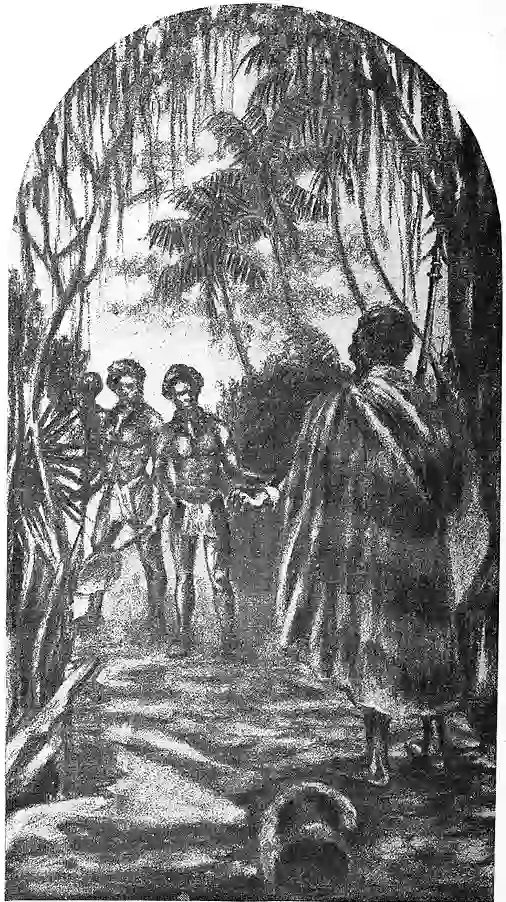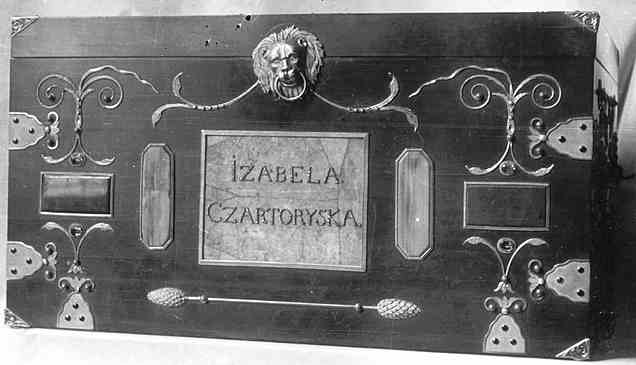King Kamehameha I’s Lost Treasure
Kamehameha I, original name Paiea, by name Kamehameha the Great, (born November 1758), Kohala district, Hawaii island. Hawaiian warrior and King who, by 1810, had conquered all of the Hawaiian Islands and established the Kamehameha dynasty, the most enduring and well-documented Hawaiian ruling line.
When Kamehameha died in May 1819, his body was hidden in the traditional ritual known as hūnākele by his trusted associates, Hoapili and Honolulu. A person’s mana, or power, was valued. And it is believed that to protect mana, bones should be kept hidden.

When the King died in 1819, his body was said to have been buried with millions of dollars in gold and diamonds. However, Kamehameha’s burial site has never been discovered.
What is the full name of King Kamehameha?
Kalani Paiʻea Wohi o Kaleikini Kealiʻikui Kamehameha o ʻIolani i Kaiwikapu kauʻi Ka Liholiho Kūnuiāke
Who Exactly is King Kamehameha? (Kamehameha the Great)
Keua and his half-brother Kalanipuu were serving Alapainui, the monarch of the island of Hawaii, around the time of Kamehameha’s birth. After conquering both their dads in the civil war that followed Keawekekahialiiokamoku’s death, Alapainui took the brothers to his court. Because Keua died when Kamehameha was young, he was nurtured in the court of his uncle, Kalanipuu.
According to the ancient mele chant of Keaka, Alapainui’s wife, Kamehameha, was born in the month of ikuw (winter) or about November. After discovering the kid had survived, Alapai gave the child, Kamehameha, to his wife, Keaka, and her sister, Hkau, to care for.
Kamehameha was nurtured in his uncle Kalanipuu’s royal court. After Kalanipuu died in 1782, he rose to prominence. While Kwala, Kalanipuu’s son, inherited the throne, Kamehameha was given a high religious role as guardian of the Hawaiian deity of war, Kilimoku. He was also assigned responsibility for the Waipio Valley district.

The connection between the two cousins was strained after Kamehameha committed to the gods instead of allowing Kwala to do so. Kamehameha received the allegiance of a group of Kona area chiefs.
The other narrative happened after the prophecy was passed down to the high priests and chiefs. When Kamehameha was able to lift the Naha Stone, he was regarded as the prophecy’s fulfillment. Other reigning leaders, including Keawe Mauhili, the Mahoe (twins) Keoua, and others, rejected Ka Poukahi’s prophecy. Even after learning of the prophecy, the high chiefs of Kauai backed Kiwala’o.
Keeaumoku Ppaiahiahi (Kamehameha’s father-in-law/grand uncle), Keaweaheulu Kaluapana (Kamehameha’s uncle), Kekhaupio (Kamehameha’s warrior master), and Kameeiamoku and Kamanawa were the five Kona chiefs who supported Kamehameha (twin uncles of Kamehameha).
They defended Kamehameha as Ka Na’i aupuni, the unifier. By genealogy, High Chiefs Keawe Mauhili and Keeaumoku were the next in line for ali’i nui. Both preferred their younger nephews, Kwala and Kamehameha, to themselves. Kwala was quickly beaten in the first significant engagement, the Battle of Mokuhai.
Kamehameha and his chiefs assumed the Konohiki responsibilities and sacred obligations of the Hawaiian island districts of Kohala, Kona, and Hmkua.
By 1786, the old chief Kahekili, King of Maui, had become the most potent ali’i in the islands, dominating O’ahu, Maui, Moloka’i, and Lana’i, and controlling Kaua’i and Ni’ihau through an arrangement with his half-brother Ka’eokulani. In 1790, Kamehameha and his army invaded Maui, aided by Isaac Davis and John Young.
The great chief Kahekili was in O’ahu, attempting to put down a rebellion. Using artillery salvaged from the Fair American, Kamehameha’s men drove the Maui army back, killing so many that the remains choked up a creek.
However, Kamehameha’s victory was fleeting, as one of his adversaries, his cousin Keoua, chief of Puna and Ka’u, used Kamehameha’s departure from Hawai’i to loot and burn communities on Hawai’i Island’s west coast. When Kamehameha returned to Hawai’i, he engaged Keoua in two deadly engagements.

Kamehameha then retired to the island’s west coast, while Keoua and his army proceeded south, losing some of their force in a volcanic steam blast. This civil war ended in 1790 and was the last military operation in Hawaiian history to be fought with traditional weaponry. In subsequent conflicts, Kamehameha used Western technology, which likely accounted for much of his success.
Many foreign commerce ships halted in Kealakekua Bay during the 1790s due to Kamehameha’s presence. As a result, he acquired a vast number of weaponries for use in battle against other leaders. However, the new weaponry was costly, contributing to significant rises in the cost of combat.
After over a decade of battling, Kamehameha still had not defeated all of his foes. So, on the advice of a sorcerer from Kaua’i, he built a great new heiau at Pu’ukohola in Kawaihae for devotion and sacrifices to Kamehameha’s war deity Ku.
Kamehameha planned to receive spiritual strength, allowing him to conquer the island. According to legend, rival chief Keoua was called to Pu’ukohola to discuss peace but was instead slain and sacrificed on the heiau’s altar.
Others believe he was demoralized by the fights and was “driven to surrender at Kawaihae” before being slain. After his death, Kamehameha became ruler of the entire island of Hawai’i. Meanwhile, while Kamehameha was busy with Keoua, Kahekili gathered an army that included a foreign gunner, trained dogs, and a particular troop of viciously tattooed men known as pahupu’u. They invaded towns and desecrated cemeteries around Hawai’i’s beaches until Kamehameha challenged them.
The subsequent naval combat (Battle of the Red-Mouthed Gun) was inconclusive, and Kahekili returned safely to O’ahu. Soon after, the English merchant William Brown, captain of the thirty-gun ship Butterworth, discovered Honolulu’s harbor.
Brown reached an arrangement with Kahekili fast. In exchange for military assistance, the chief “ceded” the island of O’ahu (and possibly Kaua’i) to Brown. Kamehameha also realized the value of foreign aid and approached Captain George Vancouver for assistance. Vancouver, a devout “man of empire,” persuaded Kamehameha to transfer Hawai’i to the British, who would subsequently help safeguard it.
Kamehameha made precautions as a monarch to ensure that the islands remained a united realm after his death. He brought the legal system together. He used the tax revenue to boost trade with Europe and the United States.
Young and Davis became Kamehameha’s counselors and provided him with superior weapons that aided him in battle. Kamehameha was a religious king who held the war god Kuka ilimoku. Kamehameha worshiped his gods and wooden figures in a heiau, but he originally planned to bring England’s religion, Christianity, to Hawai’i, according to explorer George Vancouver.
Because Kamehameha told Vancouver that the gods, he worshiped were his gods with mana and that with these gods, Kamehameha had become supreme monarch over all the islands, missionaries were not sent from Great Britain. Vancouver decided against sending missionaries from England after witnessing Kamehameha’s commitment.
The origins of the Law of the Splintered Paddle can be traced back to before the unification of the Hawaiian Islands. During a raid in 1782, Kamehameha caught his foot in a rock. Fearful of the great warrior, two local fishermen struck Kamehameha on the head with a big paddle, breaking it.
The fisherman and his companion could flee after Kamehameha was stunned and left for dead. The same fisherman was hauled before Kamehameha for punishment twelve years later. Instead, the King chastised himself for harming innocent people, gave the fishermen land, and released them free. “Let every elderly person, woman, and child rest by the roadside in safety,” he stated of the new rule.

What is in Kamehameha’s Treasure and How did He Earn it
Kamehameha, an intelligent businessman, earned a fortune for his kingdom by establishing a government monopoly on the sandalwood trade and imposing port taxes on visiting ships. He was a progressive ruler who deserved the title Kamehameha the Great.
It is said that King Kamehameha had a considerable amount of gold bars and jewels with him when he died, and no one knows what happened to them. It is thought that all his treasures were buried alongside his bones in his final resting place, as per his last wish.

Why Did They Hide King Kamehameha’s bones?
Kamehameha’s bones were buried in the most rigorous Hawaiian tradition of hūnākele in which a person is buried in complete secrecy, and the site is never revealed. The Hawaiians thought this was vital to protect his mana or power.
How did King Kamehameha’s Burial Happen?
When Kamehameha I died his body was prepared for the afterlife by removing the flesh from the bones. Following these ceremonies, the deceased King’s bones were transferred to a secret location to be buried to protect Kamehameha I’s mana.
This ancient practice is called the hūnākele, which translates as “to hide in secret.” Unsurprisingly, this assignment was assigned to the King’s most trusted advisers, Ho’olulu and Hoapili. The burial took place at night to further maintain the secrecy of the location of the King’s bones.
In accordance with Hawaiian customs, when the bones of Hawaiians preserved in contemporary research facilities on the mainland were repatriated to their children, they were transferred in secret during the night by a group of people known as the Hui Malama I Na Kupuna o Hawai’i Nei.
As a result of this secrecy, Kamehameha I’s final resting location remains unknown.

Possible Locations of King Kamehameha’s Tomb
Some claim Kamehameha I’s bones are buried in Moku’ula, the royal home of Kamehameha III from 1837 to 1845 on the Hawaiian island of Maui. Moku’ula is also the final resting place of several other Hawaiian royals, allowing for such supposition.
Legend also claims that Kamehameha I’s bones can be found at Moku’ula, specifically in the grotto of a half-dragon, half-woman creature known as Kihawahine. Others argue that Kamehameha I’s bones can be found in Maui’s Iao Valley, where many Hawaiian chiefs were buried.
It is also reported that David Kalakaua, the final King of Hawaii, had two sets of bones re-interred at the Royal Mausoleum in Nu’uanu Valley on the island of Oahu, one of which presumably belonged to Kamehameha I. However, information regarding those remains is unclear, and the force of Kahu will almost certainly ensure that Kamehameha’s bones are never disturbed.
Conclusion
Whoever discovers the King’s resting place will be extremely wealthy. According to the Archeological Institute of America, David Kalakaua, the last King of Hawaii, dispatched men to find King Kamehameha’s burial site.
They allegedly discovered and reburied his bones in the Royal Mausoleum in Oahu, Hawaii. Because the DNA was never analyzed, no one knows for certain if these are the King’s remains buried there.
Maybe one day, they’ll exhume the bones and perform a DNA test to ensure they’re the remains of Hawaii’s Great First King. Until then, we can only guess and fantasize about a cave containing the remains and treasures of this once-cherished King of Hawaii.
References







